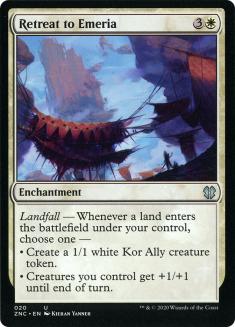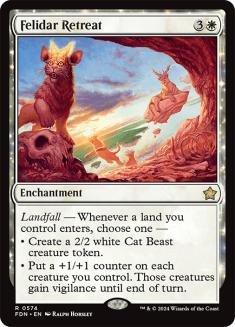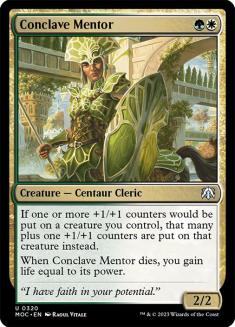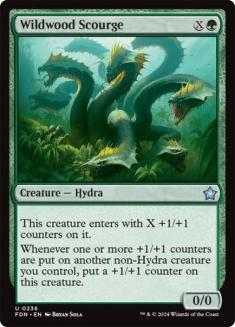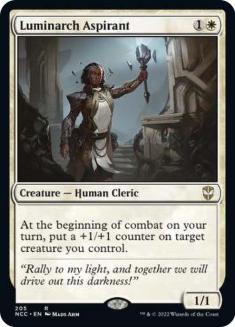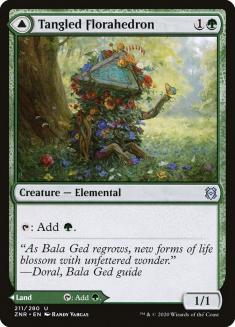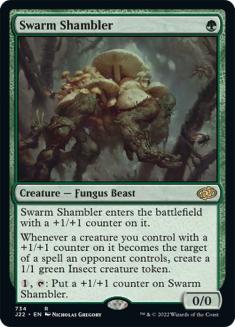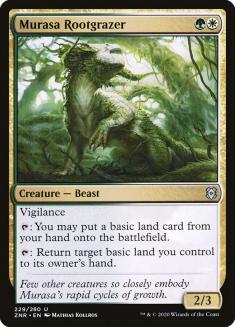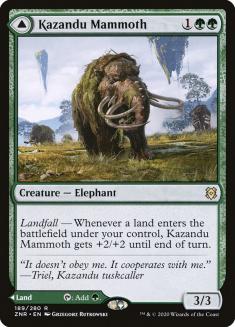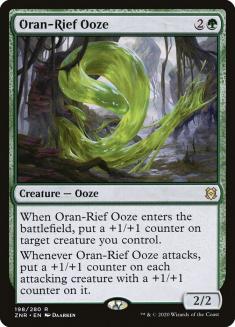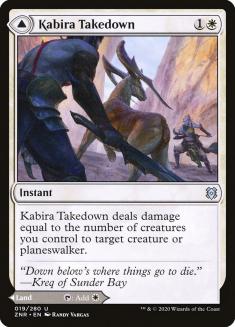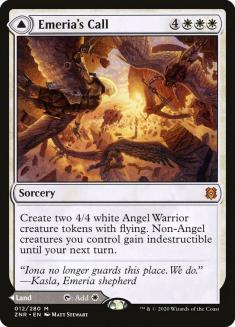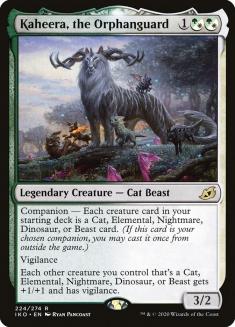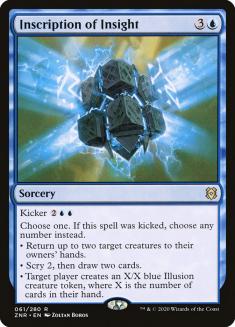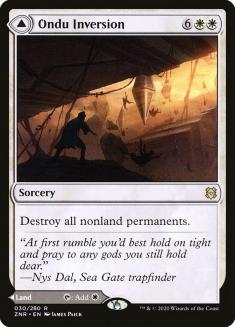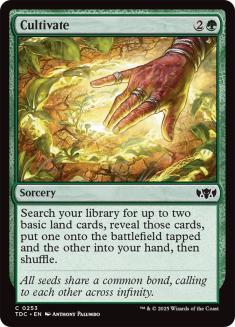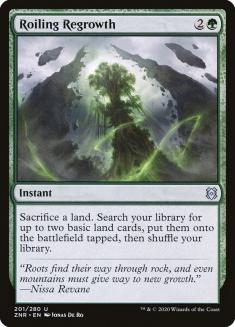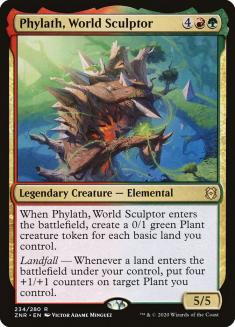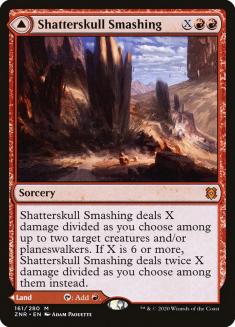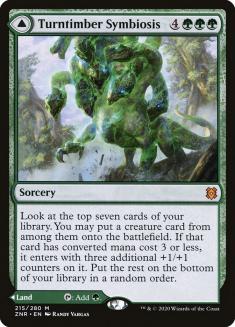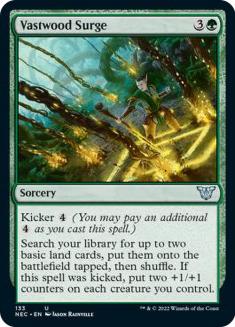A long time ago in a galaxy far, far away, Sam Black and teammates took Pro Tour Battle for Zendikar by storm playing a Bant Retreat to Emeria decklist. I don’t believe anyone made Top 8 with the deck, but it was a mixed-format tournament and if I recall correctly, the deck had the best win rate of all Constructed decks in the format. Here was the list the group played:
Creatures (14)
Planeswalkers (4)
Lands (25)
Spells (17)
- 2 Dispel
- 4 Silkwrap
- 3 Secure the Wastes
- 1 Planar Outburst
- 2 Stasis Snare
- 1 Quarantine Field
- 4 Retreat to Emeria
Sideboard

At the time, the deck really wasn’t on anyone’s radar, and neither was its namesake card Retreat to Emeria, but it ended up being pretty strong.
Of course, Magic cards are (for the most part) better now than they used to be (power creep is a real thing). We can’t expect a card to be good now just because it was good way back when; it needs to be creeped up too. And what does Retreat to Emeria look like if it’s creeped up? It looks like this:
This card is much stronger than Retreat to Emeria. Getting 2/2s instead of 1/1s would already be a meaningful improvement, but +1/+1 counters are just leagues ahead of temporary +1/+1 bonuses, and you get vigilance to boot. Does this mean it’s good enough to see play in Standard? I think it does.
It’s important to note that, unlike in the previous Standard format, we don’t have access to traditional fetchlands, though we do have Fabled Passage and to a lesser extent Evolving Wilds. However, the effect on this card is so much better that it feels like you’re playing a fetchland already even if you’re playing a basic. Furthermore, decks right now can just afford to play more lands than they did before, and this will be especially true with the modal double-faced cards (DFCs) from Zendikar Rising.
Part of the reason I think Felidar Retreat is powerful is that it can be a build-around, but it just works very well by itself; you could theoretically draw this and a bunch of lands and still win the game and there are not many cards that can claim that. In an aggressive deck, it can be a multi-Anthem that acts as sweeper insurance, and in a control deck it can make a good Field of the Dead impression. It’s not exactly the same as Field of the Dead, but it can get to work much sooner (plus Field of the Dead is banned in every format). On top of that, it stacks super-well and you actively want to draw multiples.
For example, imagine the scenario in which you draw two Felidar Retreats as your only spells. You’re going to cast one on Turn 4, and then on Turn 5 you cast your second one and play a Fabled Passage, making two Cats. At this point, it’s already hard for your opponent to attack, as you can have your pick of four 2/2s, three 3/3s, or two 4/4s to block with. Imagine you make four 2/2s and then, next turn, you play another fetchland, either Fabled Passage or Evolving Wilds — all of a sudden you’re attacking with four 6/6 vigilance creatures! That’s ridiculously powerful, and even if your next land is not a fetchland, you still get a battlefield of four 4/4 vigilance creatures. This is of course imagining you haven’t done literally anything else the entire game — you could have cast a mana creature on Turn 2, for example, and then the whole thing happens a turn sooner and you get an extra big attacker to boot.
I think there are two major ways of playing Felidar Retreat — in an aggressive deck or in a control deck. Let’s see what they look like.
Aggro Felidar Retreat
In an aggressive Felidar Retreat deck, you’re looking for two things — cards that generate multiple creatures and cards that interact well with +1/+1 counters. We’re also ideally looking for cards that put multiple lands onto the battlefield or that let us play a higher land count (such as the modal DFCs). The modal DFCs are particularly appealing because with Felidar Retreat they can turn into a Glorious Anthem in a pinch.
Here are the cards that interest me the most in this shell:
Conclave Mentor is an obvious inclusion because it doubles your Felidar Retreat pumps. If Conclave Mentor is on the battlefield, playing a Fabled Passage is a full +4/+4 to your team, which is just ridiculous. It’s also a Cleric if you’re interested in any party shenanigans.
Wildwood Scourge is interesting because it grows alongside every creature. If you have Wildwood Scourge and two other creatures on the battlefield and then you play a land, it’s going to get +3/+3. That’s probably not good enough by itself, but if we assume that we want more +1/+1 counters synergy, it easily could be.
This is another strong card that happens to work well with +1/+1 counters synergy. By itself, it attacks as a 3/3 on Turn 3, which is at least passable, but if you add any synergies it’s off to the races; for example, it’s a great combo with Conclave Mentor and with Wildwood Scourge. It’s also a Cleric for party purposes.
I think Tangled Florahedron and Felidar Retreat are going to be best friends. Early in the game, it adds as a mana creature, which speeds up Felidar Retreat by a turn and also gains bonuses from it. Later in the game, it can be used to trigger the Retreat. I think this is one of the most powerful modal DFCs we have in Zendikar Rising and I expect it to see a fair bit of play, but it’s especially good here when a land in the late-game can be so useful.
A reasonable card for a +1/+1-counters theme, as this deck can actually make use of the 1/1s it generates by pumping them all.
A good landfall mana creature, especially if we’re interested in using the fetchlands.
Murasa Rootgrazer can be used to accelerate Felidar Retreat onto the battlefield, or it can be used to continuously trigger it later in the game. Unfortunately it’s only basic land, which kind of limits its applications when we plan on having so many nonbasics, but it can still be good as late-game insurance for landfall triggers.
This is a pretty cool card that can be played before or after Felidar Retreat. Your deck is already going to have a lot of lands and cards like Murasa Rootgrazer, so it won’t be uncommon for this to attack as a 7/7 on Turn 4, and later on it triggers landfall.
I think this card suffers a bit from “best-case-scenario syndrome,” though even by itself it can attack as a 4/4, which isn’t awful.
This can be a good removal spell for a swarm deck that actively wants lands later on.
You know what’s better than two 4/4 Angels? Two 5/5 Angels! This deck will play a ton of lands and mana creatures, so it’s probably not going to be unreasonable to get to seven lands and play this a decent amount of the time, especially if we can pair Lotus Cobra with Fabled Passage.
Felidar Retreat makes Cats, which get pumped by Kaheera. It’s probably not worth it, but still something to keep in mind.
So, what does a deck like this look like?
Creatures (29)
- 4 Lotus Cobra
- 4 Conclave Mentor
- 1 Wildwood Scourge
- 2 Murasa Rootgrazer
- 2 Legion Angel
- 4 Swarm Shambler
- 4 Tangled Florahedron
- 4 Luminarch Aspirant
- 4 Kazandu Mammoth
Lands (20)
Spells (11)
Sideboard

This deck has twenty lands, which is of course a low amount, but it’s also playing thirteen modal DFCs, so you have access to 33 lands total, which means you should never ever have mana problems (though you’re still expected to cast many of your modal DFCs).
I’m still not sure how good Legion Angel is, but this deck might end up flooding a reasonable amount, so I like having access to a mana sink like this. There are many hands that will cast an Angel on Turn 3 and then you just continue casting them every turn of the game.
You could try to have a more token-centric approach, but there are actually not many token makers in this format (I’m not really keen to play Omen of the Sun in my deck just because it makes two 1/1s). Squad Commander is a possibility, since Conclave Mentor and Luminarch Aspirant are both Clerics — if we add Tajuru Paragon to the list, then it might be enough to consistently get two tokens (which makes it three bodies in a card), but that still doesn’t seem quite good enough.
Control Felidar Retreat
The other approach is to play Felidar Retreat as a win condition in a control deck, much like Field of the Dead used to be. The aggro deck relied a lot on the +1/+1 mode to pump creatures that were already on the battlefield, but the control deck is going to need to make the tokens first before it can pump them. Luckily it gets to play Uro, Titan of Nature’s Wrath, which means it’s not going to be hard to get multiple triggers in the same turn.
Here are the cards I think can be good in a control version that weren’t mentioned before:
An obvious inclusion as all the modes are strong here. I like how it particularly powers up Lotus Cobra if we choose to play that. Plus, who doesn’t want 7/7 Uros?
This doesn’t necessarily have much to do with Felidar Retreat, but I think this is a strong card in a deck that generates a lot of mana (it’s a little “Hydroid Krasis-esque,” if you will). Plus, you can play cards like Tangled Florahedron and then return them to your hand, so there’s at least some potential synergy.
This card is very expensive, which means I think you have to treat it as a land first. That said, it seems like a pretty interesting one- or two-of, since the effect is potentially very swingy in the late-game.
Acceleration is obviously going to be good with Felidar Retreat (you can still go Turn 4 Retreat + land) and Cultivate adding two guaranteed triggers makes it a powerful potential addition. To be able to play Cultivate, however, we might need more basic lands, which means we can’t play as many modal DFCs (especially because we also need more colored sources).
Gets two landfall triggers and fuels Uro quite well, but I think overall Cultivate is usually going to be the better ramp spell.
A planeswalker that you can cast on Turn 3 and that creates a ton of tokens for you to pump.
Creatures (15)
Planeswalkers (2)
Lands (21)
Spells (22)
- 3 Cultivate
- 2 Banishing Light
- 2 Elspeth Conquers Death
- 4 Shark Typhoon
- 4 Emeria's Call
- 2 Inscription of Insight
- 4 Felidar Retreat
- 1 Ondu Inversion
Sideboard

Yet another option is a four-color approach, relying mostly on basics to trigger other landfall cards. Some potential options:
Omnath, Locus of Creation is absurdly powerful — if you can play two lands in one turn, it pays for itself and then some. Definitely a potential landfall payoff that we don’t have in the other versions, and even though it’s not trivial to cast you do have two Triomes to help you.
We’re not going to have all basics, but we’re going to have a lot of them, and how many do you truly need for Phylath? It’s another powerful landfall payoff that has great synergy with Felidar Retreat.
In a ramp deck, this can kill two creatures or planeswalkers very easily.
The other versions don’t have enough powerful creatures to make this work, but perhaps once you have Phylath and Omnath it becomes worth playing? I think the red and white ones are mostly better in this deck, but it’s something to keep in mind.
In a deck with Felidar Retreat and Phylath, I think the potential upside on Vastwood Surge is more important than the cycling on Migration Path.
Creatures (19)
- 4 Lotus Cobra
- 4 Uro, Titan of Nature's Wrath
- 4 Omnath, Locus of Creation
- 4 Tangled Florahedron
- 3 Phylath, World Sculptor
Lands (24)
Spells (17)
Sideboard

Overall, I’m really not sure what the best approach is with Felidar Retreat, and I’m also not sure on the number of actual lands versus modal DFCs (I’m sure this will take a lot of experimentation from everyone). Regardless of what the exact numbers end up being, I’m very excited to be able to play 32 lands and 42 spells in the same deck moving forward!


